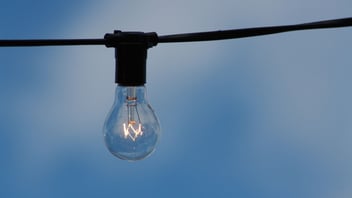Understanding Your United Illuminating Company Utility Bill

If you’re a commercial or industrial customer in our Connecticut service area, you’re likely getting your utility bill from one of two utility companies: Eversource and the United Illuminating (UI) Company. This article will explain your monthly UI utility bill, break down what you’re paying for, and highlight where you can save. For reference, we’ve spelled out some of the typical solar language you’ll find on your bill, like the difference between supply and transmission and what kilowatt-hours (kWh) mean when you see them on your bill.
Your UI bill includes:
- Supply and demand (see: delivery) charges that make up the total of your electric bill.
- Your monthly usage.
- A 13-digit POD (Point of Delivery) & 4-digit name key (which is the first 4 letters of your commercial property).
- Your supply summary which includes your current bill cycle, rate for your next consumption period, number of cycles for your contract, when your contract ends, and if applicable, an early termination fee.
- The delivery portion of your bill has six line items, including transmission per kWh and Distribution Basic Service rate, and more that add up to total delivery charges.
 click image for pdf file link
click image for pdf file link
UI Supply Charges
Unlike Eversource, all your charges are on one page. Your UI utility bill is divided into two parts—your UI Supply is called Standard Service and the delivery portion. UI doesn’t get any profit from Standard Service because it charges no more than the cost of buying the electricity to power your business. As a customer of UI, you can choose a different supplier that may lower your supply charge, thus reducing your electricity costs. In your supply summary, you’ll find your supplier cost and in the event you went with a different supplier, you’ll also see an extra line for what you would have paid if you had paid for Standard Service supply instead.
UI Delivery Charges
Your delivery charges consist of six different rates. Four of them collect UI costs: transmission per kWh, the others are required by the General Assembly as energy-related public policy programs. The delivery charge isn’t where you get your cost savings; it’s a function of the Federal Energy Regulatory Commission and sets the price UI collects from its customers. The Distribution Basic Service rate helps maintain the local distribution system. Costs that are not recovered through the Distribution Basic Service rate, are found on your “distribution per kWh” line item and are costs that are shared by all customers, like wiring and payroll. Your FMCC charge supports various renewable energy programs (recall the public policy costs we mentioned earlier).
| Key Takeaways |
|



